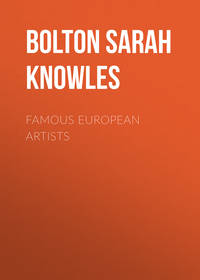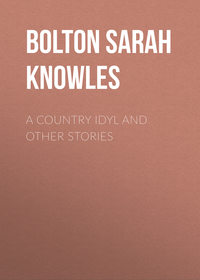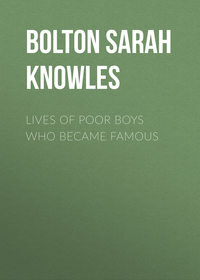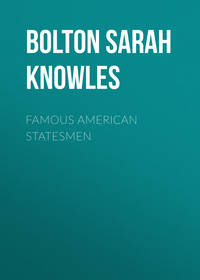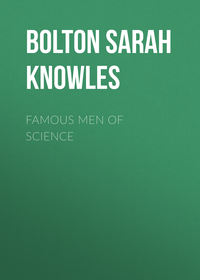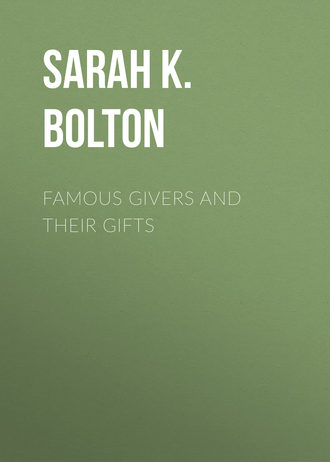 полная версия
полная версияFamous Givers and Their Gifts
In the North American Review for December, 1889, Mr. Carnegie suggests what he considers seven of the best uses for surplus wealth: The founding of great universities; free libraries; hospitals or any means to alleviate human suffering; public parks and flower-gardens for the people, conservatories such as Mr. Phipps has given to the park at Allegheny City, which are visited by thousands; suitable halls for lectures, elevating music, and other gatherings, free, or rented for a small sum; free swimming-baths for the people; attractive places of worship, especially in poor localities. Mr. Carnegie's own great gifts have been largely along the line which he believes the "best gift to a community," – a free public library. He thinks with John Bright that "it is impossible for any man to bestow a greater benefit upon a young man than to give him access to books in a free library."
"It is, no doubt," he says, "possible that my own personal experience may have led me to value a free library beyond all other forms of beneficence. When I was a working-boy in Pittsburg, Colonel Anderson of Allegheny – a name I can never speak without feelings of devotional gratitude – opened his little library of four hundred books to boys. Every Saturday afternoon he was in attendance at his house to exchange books. No one but he who has felt it can ever know the intense longing with which the arrival of Saturday was awaited that a new book might be had. My brother and Mr. Phipps, who have been my principal business partners through life, shared with me Colonel Anderson's precious generosity; and it was when revelling in the treasures which he opened to us that I resolved, if ever wealth came to me, that it should be used to establish free libraries, that other poor boys might receive opportunities similar to those for which we were indebted to that noble man."
"How far that little candle throws his beams!So shines a good deed in a naughty world."Again Mr. Carnegie says, "I also come by heredity to my preference for free libraries. The newspaper of my native town recently published a history of the free library in Dunfermline, and it is there recorded that the first books gathered together and opened to the public were the small collections of three weavers. Imagine the feelings with which I read that one of these three men was my honored father. He founded the first library in Dunfermline, his native town; and his son was privileged to found the last… I have never heard of a lineage for which I would exchange that of the library-founding weaver."
Mr. Carnegie has given for the Edinburgh Free Library, Scotland, $250,000; for one in his native town of Dunfermline, $90,000; and several thousand dollars each to libraries in Aberdeen, Peterhead, Inverness, Ayr, Elgin, Wick and Kirkwall, besides contributions towards public halls and reading-rooms at Newburgh, Aberdour, and many other places abroad. Mr. Carnegie's mother laid the corner-stone for the free library in Dunfermline. He writes in his "American Four-in-Hand in Britain," "There was something of the fairy-tale in the fact that she had left her native town, poor, thirty odd years before, with her loved ones, to found a new home in the great Republic, and was to-day returning in her coach, to be allowed the privilege of linking her name with the annals of her beloved native town in one of the most enduring forms possible."
When the corner-stone of the Peterhead Free Library in Scotland was laid, Aug. 8, 1891, the wife of Mr. Carnegie was asked to lay the stone with square and trowel, and endeared herself to the people by her hearty interest and attractive womanhood. She was presented with the silver trowel with ivory handle which she had used, and with a vase of Peterhead granite from the employees of the Great North of Scotland Granite Works.
Mr. Carnegie did not marry till he was fifty-two years of age, in 1887, the year following the death of his mother and only brother Thomas. The latter died Oct. 19, 1886. Mr. Carnegie's wife, who is thoroughly in sympathy with her husband's constant giving, was Miss Louise Whitfield, the daughter of the late Mr. John Whitfield of New York, of the large importing firm of Whitfield, Powers, & Co. Mr. Carnegie had been an intimate friend of the family for many years, and knew well the admirable qualities and cultivation of the lady he married. He once wrote: "There is no improving companionship for man in an ignorant or frivolous woman." Miss Whitfield acted upon the advice which Mr. Carnegie has given in some of his addresses: "To the young ladies I say, 'Marry the man who loves most his mother.'" Mr. Carnegie now has two homes, one in New York City, the other at Cluny Castle, Kingussie, Scotland. He gives little personal attention to business, having delegated those matters to others. "I throw the responsibility upon others," he once said, "and allow them full swing." Mr. Carnegie is a man of great energy, with cheerful temperament, sound judgment, earnestness, and force of character. He has a large, well-shaped head, high forehead, brown hair and beard, and expressive face.
Mr. Carnegie's gifts in his adopted country have been many and large. To the Johnstown Free Library, Pennsylvania, he has given $40,000. To the Jefferson County Library at Fairfield, Iowa, he has given $40,000, which provides an attractive building for books, museum, and lecture-hall. The late Senator James F. Wilson gave the ground for the fire-proof building. The library owes much of its success to its librarian, Mr. A. T. Wells, who has given his life to the work, having held the position for thirty-two years. For many years he labored without salary, giving both time and money.
To the Braddock Free Library, Mr. Carnegie has given $200,000. Braddock, ten miles east of Pittsburg, has a population of 16,000, mainly the employees of the Edgar Thomson Steel Works; and the village of Homestead lies just opposite. The handsome library building has a very attractive reading-room, which is filled in the evening and much used during the day by the families of the employees. There is also a large reading-room exclusively for boys and girls, where are found juvenile books and periodicals. The librarian, Miss Helen Sperry, writes: "There is a great deal of local pride in the library, and it grows constantly in the affection of the people."
The building was much enlarged in 1894 to accommodate the Carnegie Club of six hundred men and boys. The new portion contains a hall capable of seating eleven hundred persons, a large gymnasium, bathrooms, swimming-pool, bowling-alleys, etc.
"In order to encourage public spirit in Braddock," says the Review of Reviews for October, 1895, "a selection of books on municipal improvement, streets and roads, public health, and other subjects in which the community should be interested, was placed on the library shelves; and it is said that these books have been consulted by the municipal officers, and results are already apparent." This is a good example for other librarians. Much work is being done in local history and in co-operation with the public schools.
To the Carnegie Free Library of Allegheny City, Mr. Carnegie has given $300,000, the city making an annual appropriation of $15,000 to carry on its work. The building is of gray granite, Romanesque in style, with a shelving capacity of about 75,000 volumes. The library has a delivery-room, a general reading-room, women's reading-room, reference-room, besides trustees' and librarians' rooms. The building also contains, on the first floor, a music-hall, with a seating-capacity of eleven hundred, where free concerts are given every Saturday afternoon on a ten-thousand-dollar organ; there is an art-gallery on the second floor, and a lecture-room. The latter seats about three hundred persons, and is used for University Extension lectures, meetings of the Historical Society, etc. A room adjoining is for the accommodation of scientific societies. The city appropriates about $8,000 yearly for the music-hall, fuel, repairs, etc.
The Allegheny Free Library was formally opened by President Harrison on Feb. 13, 1890. Mr. Carnegie said, in presenting the gift of the library, "My wife, – for her spirit and influence are here to-night, – my wife and I realize to-night how infinitely more blessed it is to give than to receive… I wish that the masses of working men and women, the wage-earners of all Allegheny, will remember and act upon the fact that this is their library, their gallery, and their hall. The poorest citizen, the poorest man, the poorest woman, that toils from morn till night for a livelihood, as, thank Heaven, I had that toil to do in my early days, as he walks this hall, as he reads the books from these alcoves, as he listens to the organ, and admires the works of art in this gallery, equally with the millionnaire and the foremost citizen, I want him to exclaim in his own heart, 'Behold, all this is mine. I support it, and I am proud to support it. I am joint proprietor here.'" "Since the library opened four years ago," says Mr. William M. Stevenson, the librarian, "over 1,000,000 books and periodicals have been put into the hands of readers… The concerts have been exceedingly popular, and incidentally have helped the library by drawing people to the library who might otherwise have remained in ignorance of the popularity and usefulness of the institution."
Mr. Carnegie's greatest gift has been the Pittsburg Library. It is a magnificent building of gray Ohio sandstone, in the Italian Renaissance style of architecture, with roof of red tile. The architects were Longfellow, Alden, and Harlow, their plan being chosen from the one hundred and two sets of plans offered. The library building is 393 feet long and 150 feet wide, with two graceful towers, each 162 feet high, and has capacity for 300,000 volumes. The entire "stack" or set of shelves for books is made of iron in six stories, and is as nearly fireproof as possible. The lower stories are for the circulating-books; the upper stories for reference-books.
The library proper is in the centre of the building, reached by a broad flight of stone steps. Above, cut in stone, are the words, "Carnegie Library; Free to the People." The vestibule, finished in marble with mosaic floors, is handsomely decorated. On the first floor are the circulating-library, "its blue-ceiling panels bordered with an interlace in orange and white," a periodical room on either side, one for scientific and technical, the other for popular and literary magazines, with rooms for cataloguing and for the library officials.
"The reference reading-room on the second floor, large, beautiful, and well-lighted," says the efficient librarian, Mr. Edwin H. Anderson, "is for quiet study. Here reference-books, such as encyclopædias, dictionaries, atlases, etc., are at hand, on the shelves along the walls, to be freely consulted." This room is of a greenish tone, with ivory-colored pilasters and arches, and a fleur-de-lis pattern painted in the wall-panels, from the "mark" of a famous Florentine printer and engraver four centuries ago.
Across the corridor from the reference reading-room are five smaller rooms for special collections of books. One is occupied by a musical library of two thousand volumes, of the late Karl Merz, which was bought and presented to the library by several citizens of Pittsburg. Another will contain the collection to be purchased from the fund left by Mr. J. D. Bernd, and will bear his name. Another will be used for art-books, and another for science.
The children are to have a reading-room, made attractive by juvenile books, magazines, and copies of good pictures. A large and well-lighted room in the basement is used for the leading newspapers of the country.
The library has a wing on either side, one containing the art-gallery, and the other the science museum. The former has three large picture-rooms on the second floor, painted in dull red, with a wall-space of 8,300 feet for the exhibition of paintings and prints. A corridor 148 feet long, in which statuary will be placed, is decorated with copies of the frieze of the Parthenon. The basement of this wing will be devoted to the various departments of the art-schools of Pittsburg.
In the science museum three large, well-lighted rooms on the second floor will be used for collections in zoölogy, botany, and mineralogy. "The closely allied branches of geology, the study of the earth's crust; paleontology, the study of life in former ages; anthropology, the natural history of the human species; archæology, the science of antiquity; and ethnology and ethnography, treating of the origin, relation, characteristic costumes and habits of the human races, will, no doubt, receive as much attention as space and funds will permit."
It is also expected that works of skill and invention will be gathered into an industrial museum for the benefit especially of the many artisans of Pittsburg. Courses of free lectures will be given to teachers, to pupils, and to the public, as in the American Museum of Natural History of New York. Below the three rooms in the museum are three lecture-rooms, which can be used separately or as one room.
In one end of the large library building, and separated from it by a thick wall so as to deaden sound, is the music-hall, semi-circular in plan, with seats for two thousand one hundred persons, and a stage for sixty musicians and a chorus of two hundred. Much Sienna marble is used, the floor is mosaic, the walls are painted a deep rose-color, and the architecture proper in a soft ivory tone, with gilded ornamentation. Two free concerts, or organ recitals, are given each week through the year, on the large modern concert organ, built expressly for this hall. Musical lectures are also given, free from technicalities, illustrated by choir, organ, and piano. This is certainly taking music, art, and science to the people as a free gift. To this noble work Mr. Carnegie has given $2,100,000. Of this amount, $800,000 was for the main building, $300,000 for the seven branch libraries or distributing stations, and $1,000,000 as an endowment fund for the art-gallery. From the annual income of this art-fund, which will be about $50,000, at least three of the pictures purchased are to be the work of American artists exhibited that year, preferably in the Pittsburg gallery.
The city of Pittsburg agrees to appropriate $40,000 annually for the maintenance of the library system. Mr. Carnegie has always felt that the people should bear a part of the burden. He said at the opening of the library, Nov. 5, 1895, "Every citizen of Pittsburg, even the very humblest, now walks into this, his own library; for the poorest laborer contributes his mite indirectly to its support. The man who enters a library is in the best society this world affords; the good and the great welcome him, surround him, and humbly ask to be allowed to become his servants; and if he himself, from his own earnings, contributes to its support, he is more of a man than before… If library, hall, gallery, or museum be not popular, and attract the manual toilers and benefit them, it will have failed in its mission; for it was chiefly for the wage-earners that it was built, by one who was himself a wage-earner, and who has the good of that class at heart."
Mr. Carnegie has said elsewhere, "Every free library in these days should contain upon its shelves all contributions bearing upon the relations of labor and capital from every point of view, – socialistic, communistic, co-operative, and individualist; and librarians should encourage visitors to read them all."
The library stands near the entrance of the valuable park of about 439 acres given to the city by Mrs. Schenley in 1889. "This lady," says Mr. Carnegie, "although born in Pittsburg, married an English gentleman while yet in her teens. It is forty years and more since she took up her residence in London among the titled and wealthy of the world's metropolis; but still she turns to the home of her childhood, and by means of Schenley Park links her name with it forever. A noble use this of great wealth by one who thus becomes her own administrator."
Near the library are the $125,000 conservatories given to the people by Mr. Phipps, and a source of most elevating pleasure. Mr. Carnegie's gifts in and about Pittsburg amount already to $5,000,000; yet he is soon to build a library for Homestead, and one each for Duquesne and the town of Carnegie. "Such other districts as may need branch libraries," says Mr. Carnegie, "we ardently hope we may be able to supply; for to provide free libraries for all the people of Pittsburg is a field which we would fain make our own, as chief part of our life-work. I have dropped into the plural, for there is one always with me to prompt, encourage, suggest, discuss, and advise, and fortunately, sometimes, when necessary, gently to criticise; whose heart is as keenly in this work as my own, preferring it to any other as the best possible use of surplus wealth, and without whose wise and zealous co-operation I often feel little useful work could be done."
Mr. Carnegie has given $50,000 to Bellevue Hospital Medical College, New York, for a histological laboratory. He is also the founder of the magnificent Music Hall on the corner of Fifty-second Street and Seventh Avenue, New York City. The press says his investment in the Music Hall Company Limited equals nine-tenths of the full cost of the hall. "It was the dearest wish of the elder Damrosch that a grand concert-hall suitable for oratorio, choral, and symphony performances might be built in New York. The questions of cost, endowment, etc., have been discussed many times by his associates and successors, without definite result. It was the liberality and public spirit of Andrew Carnegie which finally made possible the establishment of a completely equipped home for music."
The main hall, exquisite in its decorations of ivory white, gold, and old rose, will seat about three thousand persons, with standing-room for a thousand more. In the decorations 1,217 lamps are placed. Of these, 189 are in the ceiling and the walls of the stage, 339 around the boxes and balconies, and 689 in the main ceiling. When the electric current is turned on at night the effect is magical. The electric-light plant consists of four dynamos, each weighing 20,000 pounds. Besides the main hall, there are several smaller rooms for recitals, lectures, readings, receptions, and studios.
Mr. Carnegie will need no other monument than his great libraries, the influence of which will increase in the coming centuries.
THOMAS HOLLOWAY:
HIS SANATORIUM AND COLLEGE
Thomas Holloway, one of England's most munificent givers, was born in Devonport, England, Sept. 22, 1800. His father, who had been a warrant officer in a militia regiment, had become a baker in Devonport.
Finding that he could support his several children better by managing an inn, he removed to Penzance, and took charge of Turk's Head Inn on Chapel Street. His son Thomas went to school at Camborne and Penzance until he was sixteen.
He was a saving lad, for the family were obliged to be economical. He must also have been energetic, for this quality he displayed remarkably through life. After his father died, he and his mother and his brother Henry opened a grocery and bakery shop in the marketplace at Penzance. Mrs. Holloway, the mother, was the daughter of a farmer at Trelyon, Lelant Parish, Cornwall, and knew how to help her sons make a living in the Penzance shop.
When Thomas was twenty-eight he seems to have tired of this kind of work or of the town, for he went to London to struggle with its millions in making a fortune. It seemed extremely improbable that he would make money; but if he did not make, he was too poor to lose much.
For twelve years he worked in various situations, some of the time being "secretary to a gentleman," showing that he had improved his time while in school to be able to hold such a position. In 1836 he had established himself as "a merchant and foreign commercial agent" at 13 Broad Street Buildings.
One of the men for whom Mr. Holloway, then thirty-six years old, did business, was Felix Albinolo, an Italian from Turin, who sold leeches and the "St. Come et St. Damien Ointment." Mr. Holloway introduced the Italian to the doctors at St. Thomas's Hospital, who liked the ointment, and gave testimonials in its favor.
Mr. Holloway, hoping that he could make some money out of it, prepared an ointment somewhat similar, and announced it for sale, Oct. 15, 1837. He stated in his advertisement in the paper that "Holloway's Family Ointment" had received the commendation of Herbert Mayo, senior surgeon at Middlesex Hospital, Aug. 19, 1837.
Albinolo warned the people in the same paper that the surgeon's letter was given in connection with his ointment, the composition of which was a secret. Whether this was true or not, the surgeon made no denial of Mr. Holloway's statement. A year later, as Albinolo could not sell his wares, and was in debt, he was committed to the debtors' prison, and nothing more is known of him or his ointment.
There were various reports about the Holloway ointment, and the pills which he soon after added to his stock. It was said that for the making of one or both of these preparations an old German woman had confided her knowledge to Mr. Holloway's mother, and she in turn had told her son. Mr. Holloway as long as he lived had great faith in his medicines, and believed they would sell if they could be brought to the notice of the people.
Every day he took his pills and his ointment to the docks to try to interest the captains and passengers sailing to all parts of the world. People, as usual, were indifferent to an unknown man and unknown medicines, and Mr. Holloway went back to his rooms day after day with little money or success. He advertised in the press as much as he was able, indeed, more than he was able; for he got into debt, and, like Albinolo, was thrust into a debtors' prison on White Cross Street. He effected a release by arranging with his creditors, whom he afterwards paid in full, with ten per cent interest, it is said, to such as willingly granted his release.
Mr. Holloway had married an unassuming girl, Miss Jane Driver, soon after he came to London; and she was assisting in his daily work. Mr. Holloway used to labor from four o'clock in the morning till ten at night, living, with his wife, over his patent-medicine warehouse at 244 Strand. He told a friend years afterwards that the only recreation he and his wife had during the week was to take a walk in that crowded thoroughfare. Speaking of the great labor and anxiety in building up a business, he said, "If I had then offered the business to any one as a gift they would not have accepted it."
The constant advertising created a demand for the medicines. In 1842, five years after he began to make his pills and ointment, Mr. Holloway spent £5,000 in advertising; in 1845 he spent £10,000; in 1851, £20,000; in 1855, £30,000; in 1864, £40,000; in 1882, £45,000, and later £50,000, or $250,000, each year.
Mr. Holloway published directions for the use of his medicines in nearly every known language, – Chinese, Turkish, Armenian, Arabic, and most of the vernaculars of India. He said he "believed he had advertised in every respectable newspaper in existence." The business had begun to pay well evidently in 1850, about twelve years after he started it; for in that year Mr. Holloway obtained an injunction against his brother, who had commenced selling "Holloway's Pills and Ointment at 210 Strand." Probably the brother thought a partnership in the bakery in their boyish days had fitted him for a partnership in the sale of the patent medicines.
In 1860 Mr. Holloway sent a physician to France to introduce his preparations; but the laws not being favorable to secret remedies, not much was accomplished. When the new Law Courts were built in London, Mr. Holloway moved his business to 533 New Oxford Street, since renumbered 78, where he employed one hundred persons, besides the scores in his branch offices.
"Of late years," says the Manchester Guardian, "his business became a vast banking-concern, to which the selling of patent medicines was allied; and he was understood to say some few years ago that his profits as a dealer in money approached the enormous sum of £100,000 a year… The ground-floor of his large establishment in Oxford Street was occupied with clerks engaged in bookkeeping. On the first and second floors one might gain a notion of the profits of pill-making by seeing young women filling boxes from small hillocks of pills containing a sufficient dose for a whole city. On the topmost floor were Mr. Holloway's private apartments."


